Installing a Bosch dishwasher: how to properly install and connect a dishwasher
The desire to put an electric dishwasher in the kitchen is understandable: it saves time, spends a minimum of water, qualitatively washes dishes with greasy stains and dried up slices of food.
Self-installation of a Bosch dishwasher does not fundamentally differ from connecting similar technical devices, in addition, the installation manual is provided with detailed diagrams. In this article, we will consider the installation procedure of the dishwasher and the features of its connection to communications, providing the material with step-by-step photos and thematic videos.
The content of the article:
Determining the location for the PMM
Before buying an assistant in the kitchen, you should evaluate the capabilities of the room and find a place to place a new household appliance. There are desktop and floor models, built-in, built-in and freestanding types of machines, respectively, you can choose the most suitable option. The best Bosch brand dishwashers we reviewed in following material.
It is only necessary to completely refuse a purchase if the kitchen is small-sized and every centimeter of usable area is already occupied.
Typically, the dishwasher is placed in the lower tier of furniture, not far from the sink. The connection place is dictated by the location of sewer and water supply communications. The closer the machine is to the pipes, the less problems there are with installing and connecting a Bosch dishwasher, regardless of its technical characteristics.
Do not forget that any saving is a concession. Suppose narrow built-in dishwashers easily handle serving sets - plates, cutlery, cups, provided they proper boot, but some models are not suitable for washing pots, trays, baking dishes, pans. And housewives in large families are well aware of how much time and effort it takes to clean just large-sized dishes.
General recommendations and rules
So that the machine during use does not cause complaints, does not require repair and frequent maintenance, it is necessary to consider the procedure for its installation.
The following connection procedure applies to all types of dishwashers:
- Checking the configuration and integrity of the equipment after transporting it to the house.
- Installation on a predetermined place on a table, floor or in a furniture module.
- Connection to the sewage system using a drain hose that is introduced into the sink or connected to a siphon using an adapter.
- Water connection using a water supply hose.
- Installing a separate power outlet or using a pre-mounted.
If there are difficulties with connecting the hoses or the device of the outlet, then the connection order can be changed, nevertheless, you will need to complete each item from the list.

There are a number of rules, the implementation of which will help to avoid problematic and emergency situations. Usually they are listed in the instructions, so the most important requirement is a careful study of the documentation.
It is not recommended to place the dishwasher near the radiator: the heat radiated by the battery negatively affects its “well-being”.If the machine is built in next to the refrigerator, on the contrary, it will “suffer”.
Make sure that the power cord is also not exposed to heat, otherwise the insulation will melt and a short circuit or current leakage can occur - both are dangerous.

After installation, be sure to check whether the door opens well, and whether the boot module (s) is working properly. If there is not enough space, then the open door will create a deficit of space - do not forget about it with future use and try to arrange the furniture so that it is easy to maintain the machine.
Instructions for installing the Bosch machine
Home appliance organizations typically offer installation services. Do not neglect them if you want to keep the warranty on a new dishwasher. If calling a specialist for some reason is not possible, carefully read the instructions.
It contains diagrams and recommendations on how to properly install a specific Bosch dishwasher model on your own.

Stage # 1 - Sewer Connection
A drain hose is used to connect the washing section of the machine to the sewer pipe. It may be part of the delivery kit, or may be purchased separately. The drain hose is smooth and corrugated. The first clogs less, the second bends better.

We offer not to dwell on the simple insertion of a drainage hose into the sewer outlet, but to carry out a number of measures that will further save the machine and the connected hose from additional repairs and cleaning:
- be sure to use a siphon - so you will forever get rid of the discomfort caused by an unpleasant odor;
- a loop in the form of a loop at a distance of 45-55 cm from the floor will help to avoid the reverse flow of water;
- ensure the drain connection to the sewer pipe is tight to eliminate the risk of leaks and flooding.
It is impractical to fill the joints with sealant - when replacing the elements, all equipment will have to be removed. Clamps are equally reliable, which evenly tighten the hose around the entire circumference. There are devices with plastic flare nuts - they are not so reliable, but with constant monitoring they can provide tightness for a long time.

To connect the drain of dishwashers for kitchen sinks, siphons are produced with a nozzle designed to connect to the hose. They are attractive due to their compact size, optimal shape and convenient system assembly scheme.
So, to connect to the sewer, you must:
- fix the drain hose to the outlet of the machine;
- connect the hose to water seal;
- provide a sealed entrance to the sewer pipe with an adapter.
If the machine took a seat next to the sink, the connection will be much simpler, since you can organize a common drainage unit.

Stage # 2 - water supply connection
To properly connect the water, be sure to look at the instructions. Manufacturers indicate the desired temperature of the supplied water, and often it should not exceed +25 ° C. This means that the machine itself heats the water to the required temperature and can only be connected to a cold branch.
This principle applies to a number of models of washing machines.

Dishwasher repair masters strongly recommend not to take risks, but still do only with a “cold” connection, and here's why:
- Unlike systems with heated water in private houses, which are regulated independently, centralized ones cannot provide the recommended temperature, and it often exceeds the parameters declared by the manufacturer.
- Hot water lines are sometimes not equipped with filters, and it is of poor quality.
- In the summer, hot water is often turned off for a month in order to prevent and repair the networks.
- It is possible that using hot water will cost more than electricity to heat cold - modern Bosch energy saving and development modes have minimized energy costs.
If the dishwasher “rises” next to the sink, it is easiest to insert into the channel going to the mixer. To do this, use a tee with the ability to overlap one line. It has the dimensions of the outputs “mother” - “father” ½ inch and the outlet for the dishwasher with thread ¾ inch, located on the outside.
A shut-off valve is installed on the side exit. A product with shutoff valves is a little more expensive, but it allows you to block the water flowing through the hose into the machine. This is convenient when you need to urgently make repairs or change parts in the dishwasher.
It is necessary to arrange the tee so that it has free access if you need to turn off the water for the dishwasher.
Before installing the adapter with a tap, you should check its performance so that you do not have to re-install it. For this, water is poured into the outlet side pipe and the crane is turned to different positions.

Often, the distribution of cold water is not limited to a tee device: filters, a washing machine hose or an outlet to the boiler are already installed under the sink. Then it is more convenient to use a collector having several outlet pipes. A propylene or metal product is inserted into the cold water supply pipe, and hoses leading to household appliances are already connected to it.
In practice, you can encounter various problems when connecting the dishwasher to the water supply, the main thing is to find the optimal solution.
For example, it was noticed that when installing the machine at a considerable distance from the sink, it is more advisable to extend the water supply than to extend the flexible hoses. That is why before ordering a new kitchen set, you first need to solve all the issues associated with the installation of equipment.
Stage # 3 - Power Supply
In order to independently connect the Bosch dishwasher to the mains, you must have the skills of electrical work, otherwise we recommend that you contact a qualified specialist.
The following materials will be required:
- VVG cable (silt VVGNG) 3 * 2.5;
- socket with grounding at 16A;
- circuit breaker.
The cable is laid in the prepared gate and connected through the installation box. Be sure to leave a small supply of wires inside the box for possible reconnection.

Then, a separate difavtomat is mounted in the switchboard: the blue core is zero (N), the white one is terminal 2, the yellow-green wire is sent to the grounding core.

The Bosch dishwasher’s passport contains the required technical data. For example, voltage 220-240 V, 50-60 Hz, power consumption 2200-2400 W, recommended data of the protective device - 16 A.
After connecting to the mains, a test run of the dishwasher is carried out. During testing, you can verify the performance of the basic functions, check the noise level. After work, inspect the hoses for leaks and, if any, reconnect and seal the joints more thoroughly.
Also, before you start using it will not be amiss to familiarize yourself with operating rules dishwasher equipment.
Conclusions and useful video on the topic
Installing cars is carried out strictly according to the instructions, and how this happens in real life, you can see in the video below.
Installing the BOSCH SPV58M50 model - everything is strictly according to the instructions:
Secrets of connecting the built-in Bosch SMV45IX00R:
Testing the Bosch SPV40X80 model:
Using the instructions and following the safety rules, you can install even the most expensive Bosch dishwasher. However, in case of any difficulties associated with the connection of the sewer, water supply or power supply, be sure to contact the service center. There you can order services for further maintenance and repair of household appliances. Although a number of Bosch dishwasher problems are quite within reach do it yourself.
Do you want to supplement our publication with useful information or share your own experience installing a Bosch machine? Tell us about the difficulties that you encountered during the installation process, write your recommendations, share photos of the finished work in the comments to this article.

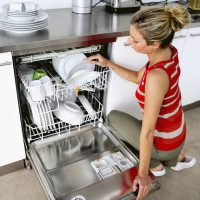 TEN for the Bosch dishwasher: how to choose + replacement instructions
TEN for the Bosch dishwasher: how to choose + replacement instructions 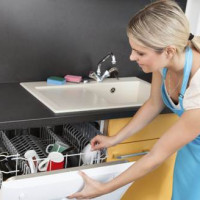 Bosch SPS40E32RU dishwasher overview: innovative designs at a modest price
Bosch SPS40E32RU dishwasher overview: innovative designs at a modest price 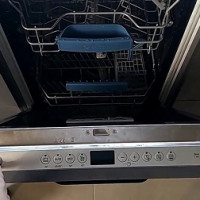 Overview of the Bosch SPV47E40RU dishwasher: economical consumption of resources when washing class A
Overview of the Bosch SPV47E40RU dishwasher: economical consumption of resources when washing class A 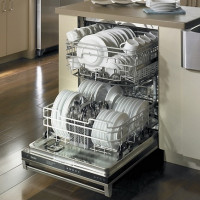 Overview of the Bosch SMS24AW01R dishwasher: a worthy representative of the middle price segment
Overview of the Bosch SMS24AW01R dishwasher: a worthy representative of the middle price segment 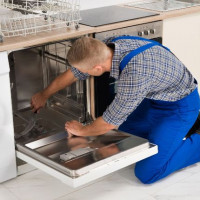 Installation of the built-in dishwasher: step-by-step installation instructions
Installation of the built-in dishwasher: step-by-step installation instructions 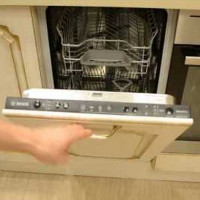 Overview of the Bosch SPV47E30RU dishwasher: when inexpensive can be of high quality
Overview of the Bosch SPV47E30RU dishwasher: when inexpensive can be of high quality  How much does it cost to connect gas to a private house: the price of organizing gas supply
How much does it cost to connect gas to a private house: the price of organizing gas supply  The best washing machines with dryer: model rating and customer tips
The best washing machines with dryer: model rating and customer tips  What is the color temperature of light and the nuances of choosing the temperature of the lamps to suit your needs
What is the color temperature of light and the nuances of choosing the temperature of the lamps to suit your needs  Replacement of a geyser in an apartment: replacement paperwork + basic norms and requirements
Replacement of a geyser in an apartment: replacement paperwork + basic norms and requirements